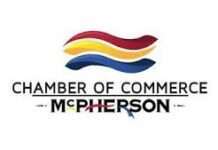(NAPS)—A lot has changed in the past decade since Microsoft launched Windows Server 2003. Capabilities that were previously only available to a large enterprise are now affordable and accessible to businesses of any size—hardware is less expensive, devices are smaller, virtualized operating systems are more efficient, and robust collaboration solutions like Office 365 are available at a fraction of the cost compared to maintaining them on premises. In addition, the way we work has changed—we’re more mobile and more social in the workplace than ever before. However, despite all these advances, many companies large and small are still running on outdated technology.
There’s never been a more important time for companies to upgrade their technology to help them grow more efficiently and more cost effectively. That’s because support for Windows Server 2003 will end on July 14, 2015. For businesses that do not upgrade to more modern technology, it can result in a less secure and stable infrastructure.
Once support for Windows Server 2003 is over, there will be:
- No updates—Microsoft will no longer develop or release any updates after ending support, which can increase security risk, result in slower performance and cause potential downtime of business applications.
- No savings—The costs of maintaining your legacy servers can add up quickly—while cloud infrastructures can deliver significant benefits to your small business’ bottom line.
- No compliance—After support ends, your business will likely fail to meet most industrywide compliance standards and regulations, which increases the risk for your daily business transactions.
Change Brings Opportunity
The good news is that migrating from Windows Server 2003 could signal the beginning of a new stage for your business, providing it with additional capabilities that are now more affordable and accessible for companies of any size. For example, by upgrading to the latest on-premises operating systems and cloud platforms, like Windows Server 2012 (R2) and Microsoft Azure, companies can have the flexibility to scale their businesses up and down based on their needs without a large up-front capital cost, and they have access to enterprise-grade security, disaster recovery and much more.
When upgrading, all business owners need to consider their options and decide on what makes the most sense for their company. Microsoft offers the following tips to help you find out which solution might work best for your company.
- Discover
The first step is to discover what applications and software you have running on outdated technology like Windows Server 2003.
There are several self-service tools that can help with this process, such as the Microsoft Assessment and Planning (MAP) Toolkit, to help you assess your current IT infrastructure and determine what platform might be best for you as a next step. You can also contact a Microsoft partner to help you make this decision.
- Assess
Once you’ve identified what applications and software need to be moved off your outdated technology, create a transition plan that will create as little disruption as possible for your employees. If customized applications are blocking your migration, connect with your Microsoft IT partner to formulate a plan.
- Target
Choose where you’d like to move your current workloads and applications. For example, you can choose to keep your applications on premises with a new server like Windows Server 2012 (R2), move to the cloud on a platform like Microsoft Azure, or do a combination (or hybrid approach) of both.
- Migrate
Several vendors offer do-it-yourself tools to assist in the decision-making process and in the migration itself, including Dell ChangeBASE, Citrix AppDNA, AppZero, Refresh IT, BlueStripe and Microsoft Services JumpStart for Windows Server 2003. Make sure to ask your Microsoft partner or team for any additional migration deals in place.
Remember, if you have any questions along the way, there are local experts—Microsoft partners—that can assist you with this transition during any step or simply help you determine what the right choice is for your business.
Cloud On Your Terms
If you are still trying to determine which type of cloud is best for the specific needs of your business, whether it’s virtualization on premises or in a public cloud with Microsoft Azure or with a hosting partner, here are a few questions and answers that may help:
- Are flexibility and scalability extremely important to your business? Do you lack the dedicated IT resources to deploy and manage your own hardware? Consider a public cloud solution such as Microsoft Azure or one of Microsoft’s hosting partners.
- Does your business store a large amount of sensitive data or work in a highly regulated industry? Perhaps a virtualized on-premises solution built with the support of a partner.
- Do your technology needs span all these scenarios, requiring the unique benefits of a hybrid cloud solution? You may want to consider leveraging Windows Server 2012 (R2) on premises augmented with the benefits of Microsoft Azure or Office 365.
To learn more, visit www.microsoft.com/en-us/server-cloud/products/windows-server-2003, or to find a Microsoft partner, visit https://pinpoint.microsoft.com.
The end of one technological era often presents a company with a chance to embrace new technology and become more competitive.




